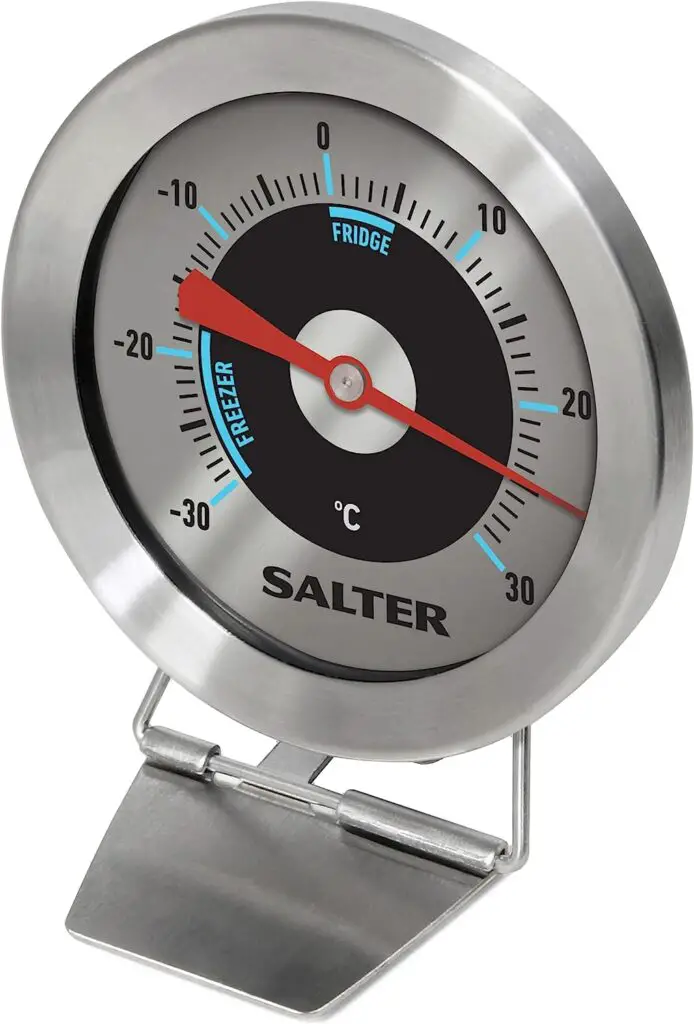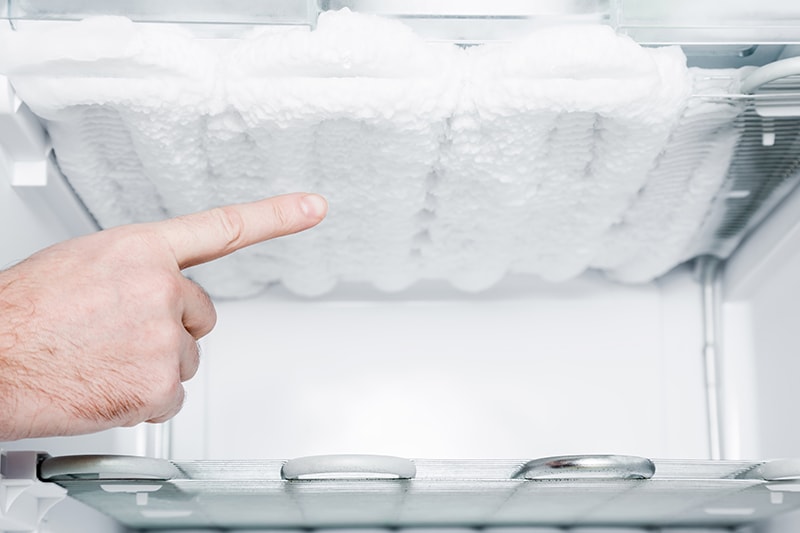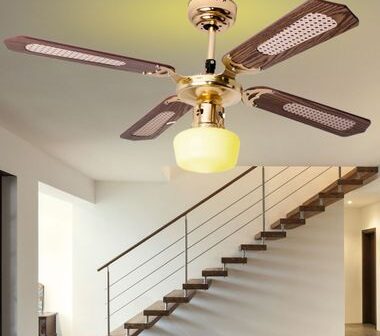
When it comes to storing food, one of the essential appliances in any kitchen is a freezer.
Freezers help us preserve perishable items and keep them fresh for an extended period. However, to ensure the longevity and quality of the stored food, it’s crucial to set the correct temperature for your freezer.
What Temperature Should a Freezer Be in the UK?
Maintaining the right temperature inside your freezer is vital for food safety and preservation.
The ideal temperature for a freezer in the UK is -18 degrees Celsius or 0 degrees Fahrenheit. This temperature is considered the freezing point for most food items, preventing the growth of bacteria and maintaining the quality of the stored goods.
Setting the freezer temperature to -18 degrees Celsius ensures that the food stays frozen, allowing it to retain its flavor, texture, and nutritional value for an extended period.
Additionally, this temperature prevents the growth of bacteria that can cause foodborne illnesses, ensuring that the food remains safe to consume.
The Importance of Setting the Correct Freezer Temperature
Maintaining the correct temperature in your freezer is essential for several reasons. Let’s explore some of the key reasons why setting the correct freezer temperature is crucial:
1. Food Safety
By setting your freezer temperature to -18 degrees Celsius, you create an environment that inhibits the growth of bacteria and other microorganisms.
Freezing food at this temperature prevents the growth of harmful bacteria that can cause food poisoning. It ensures that your frozen items remain safe to eat, protecting you and your family from potential health risks.
2. Quality Preservation
Proper temperature control helps preserve the quality of the stored food. When food is frozen at the correct temperature, it slows down the deterioration process, maintaining the texture, taste, and nutritional value of the items.
By freezing food at -18 degrees Celsius, you can enjoy fresh-tasting and high-quality meals even after an extended period of storage.
3. Energy Efficiency
Setting the freezer temperature at the recommended -18 degrees Celsius not only ensures food safety and quality but also promotes energy efficiency.
When your freezer operates at the optimal temperature, it doesn’t need to work harder than necessary, leading to lower energy consumption.
This, in turn, reduces your electricity bills and contributes to a greener, more sustainable environment.
How can I check if my freezer is operating at the correct temperature?
To check if your freezer is operating at the correct temperature, you can use a freezer thermometer.

Place the thermometer inside the freezer for a few hours, ensuring it is in a central location and not touching any frozen items.
Afterward, check the reading on the thermometer. If it shows a temperature close to -18 degrees Celsius, your freezer is operating correctly.
If the temperature is significantly higher or lower, adjustments may be needed.
Is it necessary to defrost the freezer regularly?
Yes, it is necessary to defrost the freezer regularly. Regular defrosting is essential for maintaining the efficiency and performance of your freezer, ensuring it operates optimally and keeps your food properly frozen.
When you use a freezer, moisture in the air condenses and forms ice on the walls and coils of the freezer.
Over time, this ice buildup can hinder proper airflow and temperature distribution within the freezer, affecting its ability to keep food frozen at the desired temperature.
As a result, the freezer may have to work harder and consume more energy to maintain the set temperature.
To avoid these issues, it is recommended to defrost your freezer whenever the ice buildup reaches around 0.5 centimeters (0.2 inches) in thickness.
This frequency may vary depending on factors such as humidity levels and the usage of the freezer.
By defrosting the freezer, you remove the accumulated ice, allowing proper airflow and temperature regulation.
Here are the steps to follow when defrosting your freezer:
-
Prepare: Before defrosting, remove all the food from the freezer and transfer it to a cooler or another freezer to keep it frozen.
-
Unplug: Switch off the freezer and unplug it from the power source to ensure safety during the defrosting process.
-
Let it thaw: Leave the freezer door open and allow the ice to thaw naturally. You can place bowls of hot water inside the freezer to speed up the process. Never use sharp objects or tools to chip away the ice as this can damage the freezer.
-
Clean: Once all the ice has melted, clean the interior of the freezer using a mild detergent or a solution of water and vinegar.
-
Dry and restart: Thoroughly dry the interior of the freezer with a clean cloth or towel. Once dry, plug in the freezer, switch it on, and set the temperature to the recommended -18 degrees Celsius.
How Long Does It Take to Defrost a Freezer?

The time it takes to defrost a freezer can vary depending on several factors, including the size of the freezer, the thickness of the ice buildup, and the method used for defrosting.
Generally, it can take anywhere from a few hours to a full day to defrost a freezer completely.
Here are some estimated timeframes for different defrosting methods:
-
Natural Thawing
This is the most common and recommended method for defrosting a freezer.
It involves turning off the freezer, opening the door, and allowing the ice to melt naturally at room temperature.
The time it takes for natural thawing can range from 3 to 8 hours, depending on the amount of ice buildup and the ambient temperature.
-
Hot Water Method
If you want to speed up the defrosting process, you can use the hot water method. Fill bowls or containers with hot water and place them inside the freezer.
Close the door and leave it for about 30 minutes. Then, carefully remove the water containers and use a towel to wipe away the melted ice.
This method can reduce the defrosting time to approximately 2 to 4 hours.
-
Blow Dryer Method
Using a blow dryer is another way to expedite the defrosting process. Set the blow dryer to the lowest heat setting and hold it a few inches away from the ice buildup.
Move the dryer around to evenly distribute the heat and melt the ice. Be cautious not to touch the freezer walls with the blow dryer. This method can take around 1 to 3 hours, depending on the thickness of the ice.
It’s important to note that you should never use sharp objects or tools to chip away the ice as this can damage the freezer and potentially cause harm. Additionally, avoid using excessive heat sources like heaters or heat guns, as they can also damage the freezer.
Once the ice has completely melted and the freezer is dry, clean the interior with a mild detergent or a solution of water and vinegar. Wipe down all surfaces, shelves, and drawers to remove any residue or odors.


